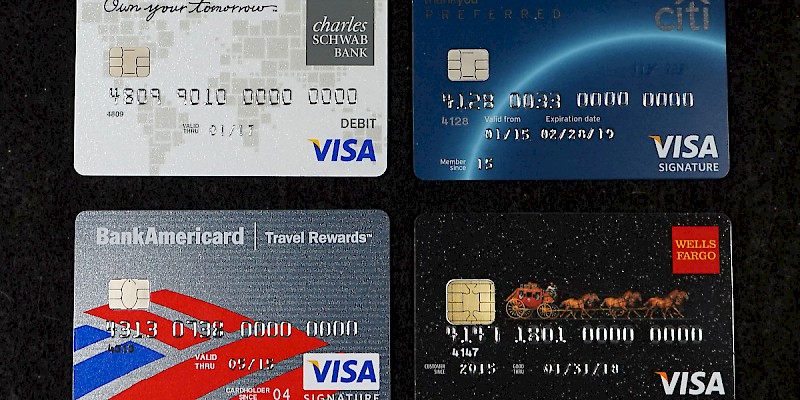Chip-and-pin cards

What is a "chip-and-pin" credit card and how can I get one?
The U.S. is woefully behind the rest of the world when it comes to implementing advanced technology in everyday life.
Japanese and European cell phones (and networks) are better, many cities now use radio cards for public transport that you just wave at the turnstile while waltzing though, and many countries are now using more advanced credit cards called "chip and PIN" with computer chips built in rather than just the magnetic stripe.
Note, this is different from the radio chip in an AMEX Blue card, and the chip-and-signature cards now being issued by many U.S. banks. The latter will work at some merchants (and ticketing machines), but not at others. (This is because chip-and-PIN cards can be used at terminals that do not have a live connection to the banking system, common at many gas stations, and some train and metro ticketing machines.)
Why do I risk the wrath of my more zealously patriotic fellow citizens by pointing all this out?
Because, in a very few (but, ominously, increasing) number of cases, you will find merchants and services in Europe that only accept the chip-and-PIN smartcards—most disruptively, this includes:
- many gas stations (especially after-hours)
- ticketing machines for trains and public transport
- the bike rental kiosks that are proliferating in many major cities
To all of them, your old-school Visa with the magnetic strip is just a worthless slab of plastic. It simply will not work.
Granted, shopkeepers can still usually process your swipe-and-sign card (though, ominouse, some are beginning to refuse)—and sometimes even that shiny new chip-and-signature card many U.S. banks are starting to issue.
Yes, of 2012, a few American banks are starting to experiment with chip cards .
Unfortunately, in the true, backwards fashion we've come to expect from our banks, most are issuing only baby-step chip-and-signature cards. These have a chip, and so will be recognized by the machines, but no PIN.
For purchases of less than $50, this is usually not a problem, as no PIN is required on those.
For larger purchases, your larval-stage chip-and-signature card will cause most card readers manned by an actual person (such as at a store or restaurant) to spit out a receipt for you to sign, so again, no problem.
For charges greater than $50 at an automated machine, well, there you may run into problems as you will need a PIN.
(Note: some banks will issue a PIN with your chip-and-signature card, but this is to access the cash advance feature, which means any purchases made using it will be charged interest at the highest possible rate—usually 21%—and start accruing immediately, not at the end of a monthly cycle in which you do not fully pay off the card, as with most purchases).
Wells Fargo and JPMorgan Chase have each made limited numbers of what they call E.M.V. cards available to select customers. They have a chip and PIN, and they will work abroad.
Another possible solution: Get a Travelex Cash Passport, currently the ONLY chip-and-pin card available to the general American market. It's a pre-paid card, so you have to fill it up with cash before you leave—and the exchange rate is an abysmal 14%–15% worse than with credit cards—but it can come in darn useful (www.us.travelex.com).
Also: pester your bank—repeatedly—to get with the program.
Also, carry cash.
- Findabetterbank.com - Site to find credit unions and other local banks. These often have low or no foreign transaction fees on their credit cards and ATM fee–refund policies.
- Capitalone.com - Offers cards with no foreign transaction fee, and chip-and-signature enabled (making it easier to use in Europe).
- Bankofamerica.com - Offers cards with no foreign transaction fee, and chip-and-signature enabled (making it easier to use in Europe).
- Madfientist.cardratings.com - Good simple search engine to find travel-worthy cards, from no foreign fees to the ones with the best points.
- Ally.com - Online-only bank (and the one I use), with ATM feee refunds and no foreign transaction fees. Sadly, no credit cards (yet)—though you can use your MasterCard-branded bank card as a debit card.
- Usaa.com - Online-only bank open to current and former U.S. military personnel and their families; ATM fee refunds, and credit cards with only 1% foreign transaction fees.
- Schwab.com - This famous brokerage firm also offers online-only checking and savings accounts with ATM fee refunds.
- Asmarterchoice.org - Credit union–finding site. Credit unions often have low or no foreign trasnaction fees on their credit cards, ATM fee–refund policies, very few fees, and interest-bearing checking accounts. In other words: What a bank should be.
- Findabetterbank.com - Site to find credit unions and other local banks. These often have low or no foreign transaction fees on their credit cards and ATM fee–refund policies.
- Ncua.gov - All about credit unions.
- Credituniondb.com - Bare-bones credit union-finding database.






